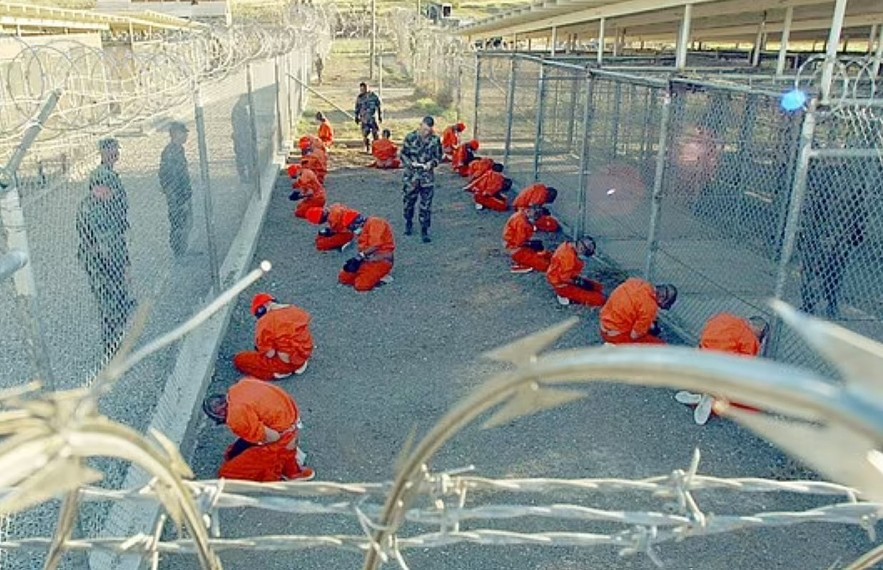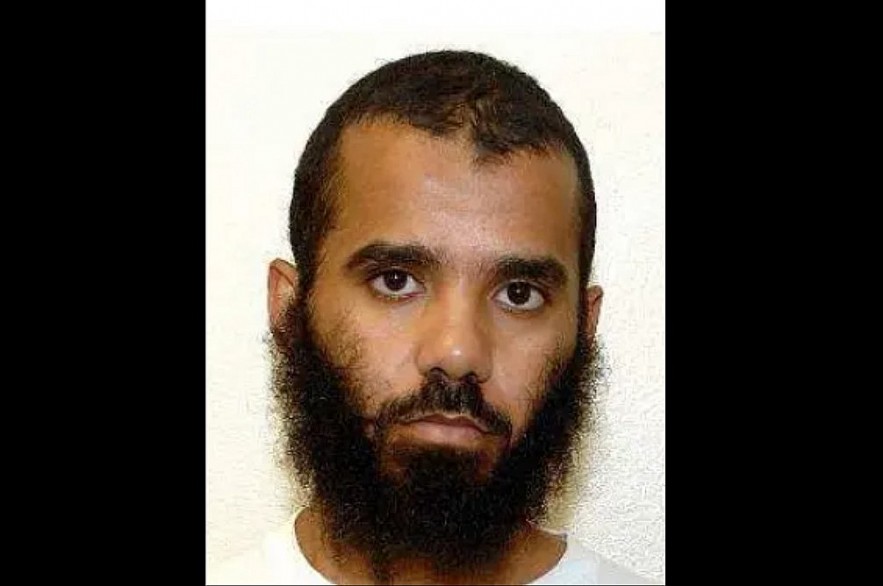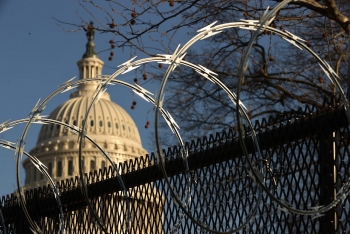Who are the Osama bin Laden Bodyguards, Released from the Guantanamo Bay
 |
| Guantanamo Bay military prison |
The Biden administration recently facilitated the transfer of 11 Yemeni detainees from the Guantanamo Bay detention facility to Oman, marking another step in its efforts to reduce the facility's population and eventually close the infamous prison.
Among the released individuals were two former bodyguards of Osama bin Laden: Moath Hamza Ahmed al-Alwi and Suhayl Abdul Anam al Sharabi. These men, alongside others linked to al-Qaeda, had been held without charge for over two decades following their capture in the aftermath of the September 11, 2001, terror attacks.
Learn more: Guantánamo Bay Detention Camp: History, Costs, Prisoners And More
The Detainees and Their Background
Moath al-Alwi was an alleged al-Qaeda fighter and bin Laden bodyguard captured in Afghanistan. According to a 2016 U.S. intelligence report, al-Alwi maintained an extremist mindset during his detention and committed several disciplinary infractions. However, these were reportedly pardoned as part of a behavioral incentive program. Suhayl al Sharabi, also a former bodyguard, was alleged to have ties to an aborted 9/11-style hijacking plot in Southwest Asia, according to a 2020 intelligence file.
The other nine detainees transferred to Oman included individuals with varying levels of alleged involvement in al-Qaeda operations: Uthman Abd al-Rahim Muhammad Uthman, Khalid Ahmed Qassim, Hani Saleh Rashid Abdullah, Tawfiq Nasir Awad Al-Bihani, Omar Mohammed Ali al-Rammah, Sanad Ali Yislam Al Kazimi, Hassan Muhammad Ali Bib Attash, Sharqawi Abdu Ali Al Hajj, and Abd Al-Salam Al-Hilah. While none of these men faced formal charges, they were detained as enemy combatants, a designation used by the U.S. government to justify prolonged detentions without trial.
Moath Hamza Ahmed al-Alwi
 |
| Al-Alwi |
Profile
- Nationality: Yemeni
- Role: Alleged al-Qaeda fighter and bodyguard for Osama bin Laden
- Date of Capture: December 2001
- Place of Capture: Afghanistan
Allegations and Intelligence Findings
Moath al-Alwi was accused of serving as a dedicated operative within Osama bin Laden's network in Afghanistan. According to an unclassified 2016 U.S. intelligence file, al-Alwi held a strong ideological commitment to extremism throughout his detention. He allegedly made several statements reaffirming extremist views, leading to concerns about his continued threat level if released. Despite these concerns, the review board ultimately deemed him eligible for transfer.
The same intelligence report highlighted his involvement in disciplinary infractions while detained at Guantanamo Bay. These infractions, including confrontations with guards and violations of detention rules, were reportedly forgiven as part of a behavioral improvement program.
Legal Status and Release
Although held as an “enemy combatant,” al-Alwi was never charged with a crime. His case exemplifies the broader controversy surrounding Guantanamo Bay, where detainees were often imprisoned based on intelligence reports without judicial proceedings. His transfer to Oman in January 2025 reflects efforts to reduce the population at Guantanamo while ensuring detainees are resettled in countries that can guarantee their safety.
Suhayl Abdul Anam al Sharabi
 |
| Al Sharabi |
Profile
- Nationality: Yemeni
- Role: Alleged bodyguard for Osama bin Laden
- Date of Capture: 2002
- Place of Capture: Pakistan
Allegations and Intelligence Findings
Suhayl al Sharabi was also closely tied to Osama bin Laden, with intelligence suggesting he served as one of his personal bodyguards. A 2020 intelligence report revealed more troubling allegations: al Sharabi was suspected of involvement in a failed al-Qaeda plot to execute a 9/11-style hijacking in Southwest Asia. Although specific details of his role remain classified, U.S. officials believed he maintained connections to al-Qaeda’s leadership structure even after his capture.
Like al-Alwi, al Sharabi’s detention was marked by a lack of formal charges or trials. This reliance on intelligence rather than prosecutable evidence highlights a key issue in the Guantanamo detention system: balancing national security concerns with legal and human rights considerations.
Behavior and Rehabilitation
During his detention, al Sharabi reportedly exhibited behavior consistent with rehabilitation efforts, which ultimately contributed to his release eligibility. However, intelligence officials expressed lingering doubts about his commitment to leaving extremist ideologies behind.
Why Oman?The detainees could not return to Yemen due to the ongoing civil war and concerns for their safety. Oman, a key ally in the region with a history of accepting Guantanamo detainees, agreed to resettle the men. However, the details of the arrangement between the United States and Oman remain unclear, and Oman has not officially commented on the transfer. |
The Legacy of Guantanamo Bay
Established in 2002 by President George W. Bush, Guantanamo Bay became a symbol of the post-9/11 "War on Terror." At its peak, the facility held nearly 800 detainees. Over the years, Guantanamo has faced intense scrutiny for alleged human rights violations, including the use of enhanced interrogation techniques, and for holding prisoners without charge or trial.
Successive U.S. administrations have struggled with the political and logistical challenges of closing the facility. Former President Barack Obama made significant efforts to shut down Guantanamo but was unable to overcome congressional opposition. President Joe Biden has vowed to finish the job, citing both moral and financial reasons. Maintaining Guantanamo costs an estimated $13 million per prisoner annually—far more than the $78,000 spent per inmate at high-security U.S. prisons.
The Future of Guantanamo Bay
With the latest transfer, only 15 detainees remain at Guantanamo Bay. Of these, three are eligible for transfer, three are awaiting reviews of their detention status, seven are involved in military commission processes, and two have been convicted and sentenced. The Biden administration's goal of closing the facility remains uncertain, as it faces ongoing resistance from political opponents and challenges in resettling detainees in host countries.
 The Full Text of the New U.S. Intelligence Classified Report that Warns Domestic Terrorism The Full Text of the New U.S. Intelligence Classified Report that Warns Domestic Terrorism Domestic terrorists pose an “elevated” threat to the country, according to an intelligence report released Wednesday. Check out the Full Text of the New U.S. ... |
 Top 10 Forgotten Terrorist Attacks in History Top 10 Forgotten Terrorist Attacks in History A common definition of terrorism in the United States is the systematic or threatened use of violence to instill fear among a population or a ... |
 Who are the Most Wanted Fugitives by U.S Secret Service - Top 10 Who are the Most Wanted Fugitives by U.S Secret Service - Top 10 Do you know which fugitive is the most wanted in the US? Check out the list by United States Secret Service right below! |

























